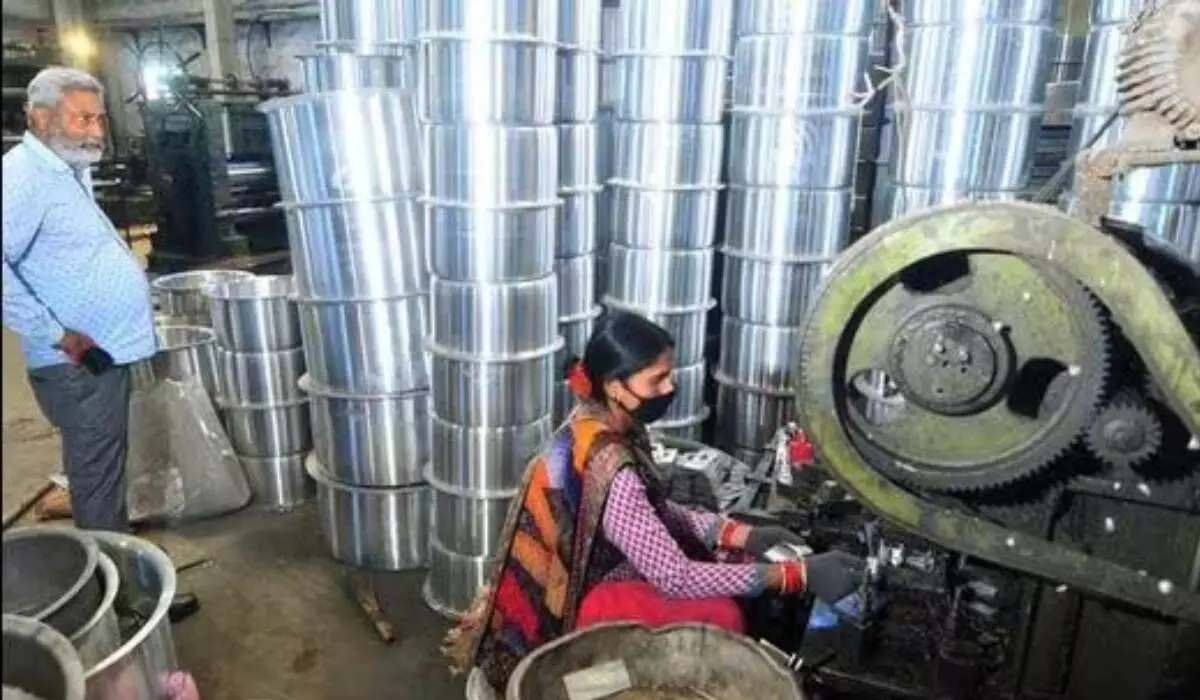MSME credit grows at 11% YoY, led by micro segment
Demand for MSME loans picks up, disbursements increase
image for illustrative purpose

Data from TU CIBIL-SIDBI shows MSME credit grew at 11 per cent year-on-year (YoY) to Rs 23 trillion as on Q2, led by the micro segment (up 20 per cent YoY).
Demand seems to be picking up gradually as inquiries stood 25 per cent higher YoY. Approval rates are also on an upward trajectory. Disbursements are trending up at a healthy pace, led by private banks with ticket sizes staying broadly stable. Headline NPL ratios continued to improve across the board. Demand scenario is strong in terms of MSME credit and lender comfort is improving too.
Talking to Bizz Buzz, Chandrakant Salunkhe, national president, SME Chambers of India, said, “See, there are 6.33 crore MSMEs in the country and 5.5 crore out of which are self-employed MSMES. Hence, I urge SIDBI and other banks to focus a minimum of 10 lakh loan accounts under the MSME segment.”
Also, as the government has now allowed MSMES to go for having a loan up to Rs 5 crore, hence, I suggest the banks to make such loans not only collateral-free, but also ensure that these loans are provided without any problem being faced by the MSMEs, he said.
Data from the report shows that there is a recovery in demand for loans from the MSME sector. Inquiries have recovered swiftly by Q3 to end higher by 25 per cent YoY. NBFCs have seen the sharpest increase in credit inquiries at 50 per cent YoY. However, since the beginning of the pandemic, PSU banks have shown the strongest recovery in inquiries (up 160 per cent). Approval rates have also increased across banks and NBFCs over the past year. MSME credit grew at 11 per cent YoY, private banks are gaining share in disbursements.
Dr Ajai Aggarwal, advisor to SME Chambers of India for AP and Telangana, said, “The government is providing lots of facilities to the MSMEs and it is up to them to avail themselves of those facilities effectively.”
The idea was to make India as a global hub for MSMEs. Moreover, whatever loans being provided to the MSMEs, they should utilise the same in a rightful manner, he said.
MSME credit has grown at a relatively modest pace of 11 per cent YoY and growth seems to be picking up. Credit growth has been supported to some extent by the ECLGS scheme during Covid. Growth has been highest in the micro segment, especially and in the very small segment (20 per cent YoY) within micro.
Similarly, disbursements have grown at a healthy pace of 24 per cent YoY, led by the micro segment (54 per cent YoY). The proportion of high risk borrowers in total live borrowers has increased steadily, but there seems to be some reversal in Q2. Average ticket sizes of new disbursements have not changed much for PSU banks or NBFCs, but private banks have seen a steady decline over the past few quarters.
Delinquency ratios continued to decline across lender categories and MSME segments, indicating that asset quality is less of a concern today. Additional data from the bureau indicates an interesting inverse relationship between credit growth and delinquency level. As mentioned earlier, the micro segment saw the sharpest growth in credit balances and disbursements within MSME credit. Data also shows that micro segment borrowers served by private banks or NBFCs tend to see a quicker increase in credit balances over the subsequent 12 months (as compared with PSU banks). As expected, NTC originations within the micro segment tend to have a lower ticket size. In our view, this phenomenon of higher focus on the micro segment is at least partly supported by increasing formalization of MSMEs and adoption of digital platforms by lenders for sourcing and underwriting credit. Though we are not worried about potential asset quality issues in MSME credit yet, we continue to watch the space closely.

